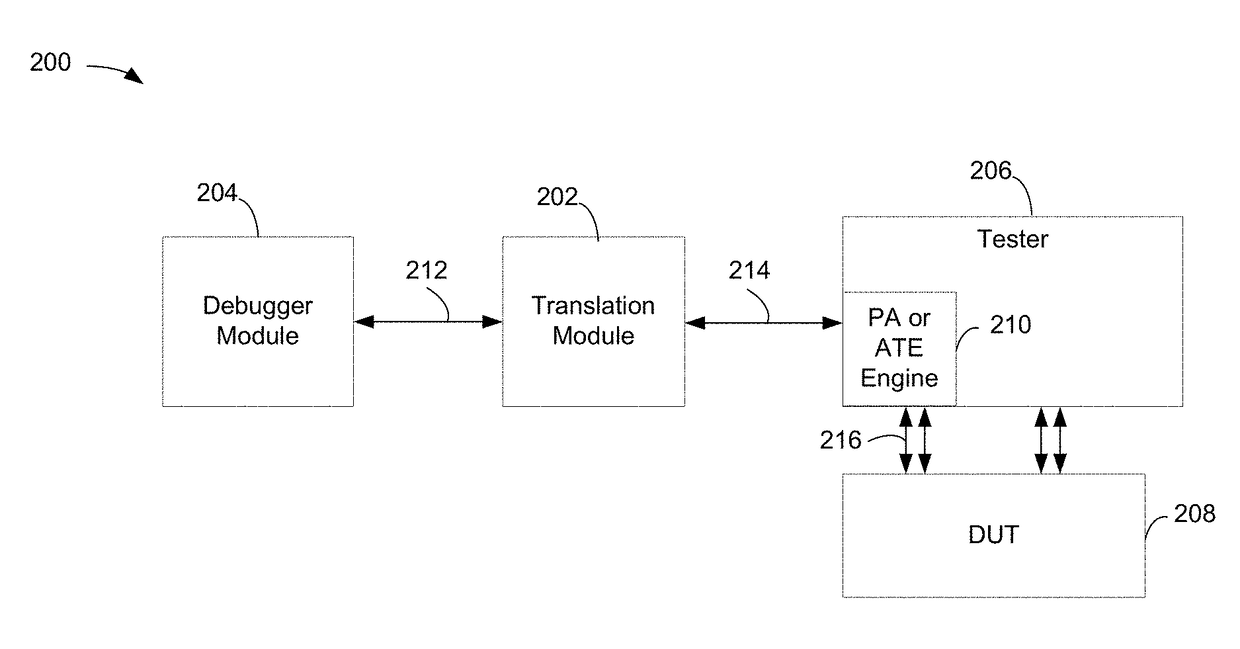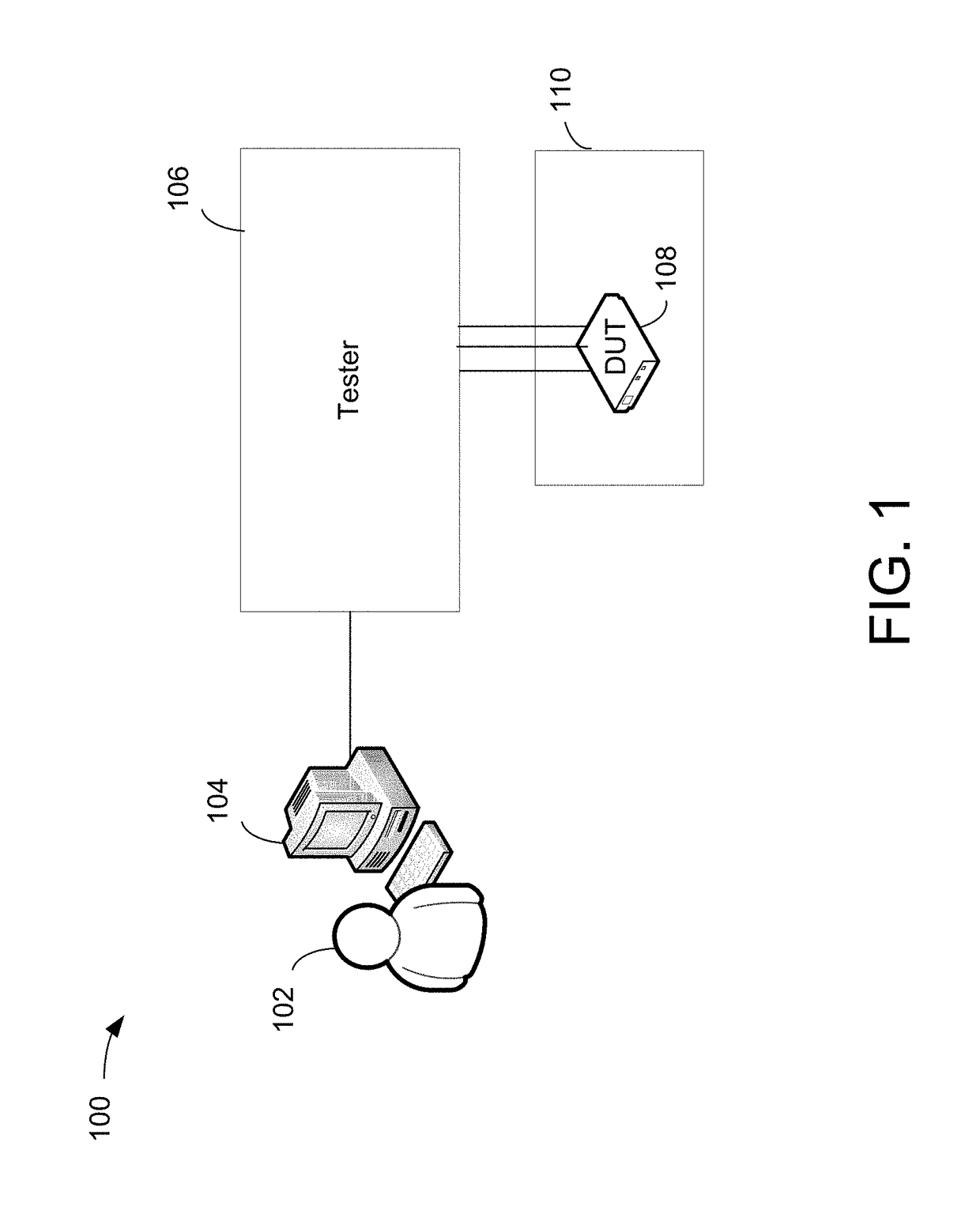Debugging in a semiconductor device test environment
a test environment and semiconductor technology, applied in the field of electronic system testing, can solve the problems of reducing affecting the quality affecting the accuracy of the test program, so as to reduce the time to debug a dut and/or a test program.
- Summary
- Abstract
- Description
- Claims
- Application Information
AI Technical Summary
Benefits of technology
Problems solved by technology
Method used
Image
Examples
Embodiment Construction
[0026]Using techniques described herein, a test system may be adapted to provide real-time, interactive debugging of a device under test (DUT). The system may leverage investment in a tester that a semiconductor device manufacturer might otherwise acquire for manufacturing testing of engineering work. Yet, such the tester may be used in a way that speeds semiconductor devices to market or facilitates identification and correction of design or systemic manufacturing defects of devices in comparison to conventional use of a tester.
[0027]In accordance with some embodiments, a customer may provide a test program, containing multiple test program commands. A debugger may, in response to debug inputs provided by a user, generate debug commands. These debug commands may be based on the test program commands, for example by indicating that test program commands should be executed at times or in ways determined by the debug inputs. Such debug commands may include stepping through the test pr...
PUM
 Login to View More
Login to View More Abstract
Description
Claims
Application Information
 Login to View More
Login to View More - R&D
- Intellectual Property
- Life Sciences
- Materials
- Tech Scout
- Unparalleled Data Quality
- Higher Quality Content
- 60% Fewer Hallucinations
Browse by: Latest US Patents, China's latest patents, Technical Efficacy Thesaurus, Application Domain, Technology Topic, Popular Technical Reports.
© 2025 PatSnap. All rights reserved.Legal|Privacy policy|Modern Slavery Act Transparency Statement|Sitemap|About US| Contact US: help@patsnap.com



